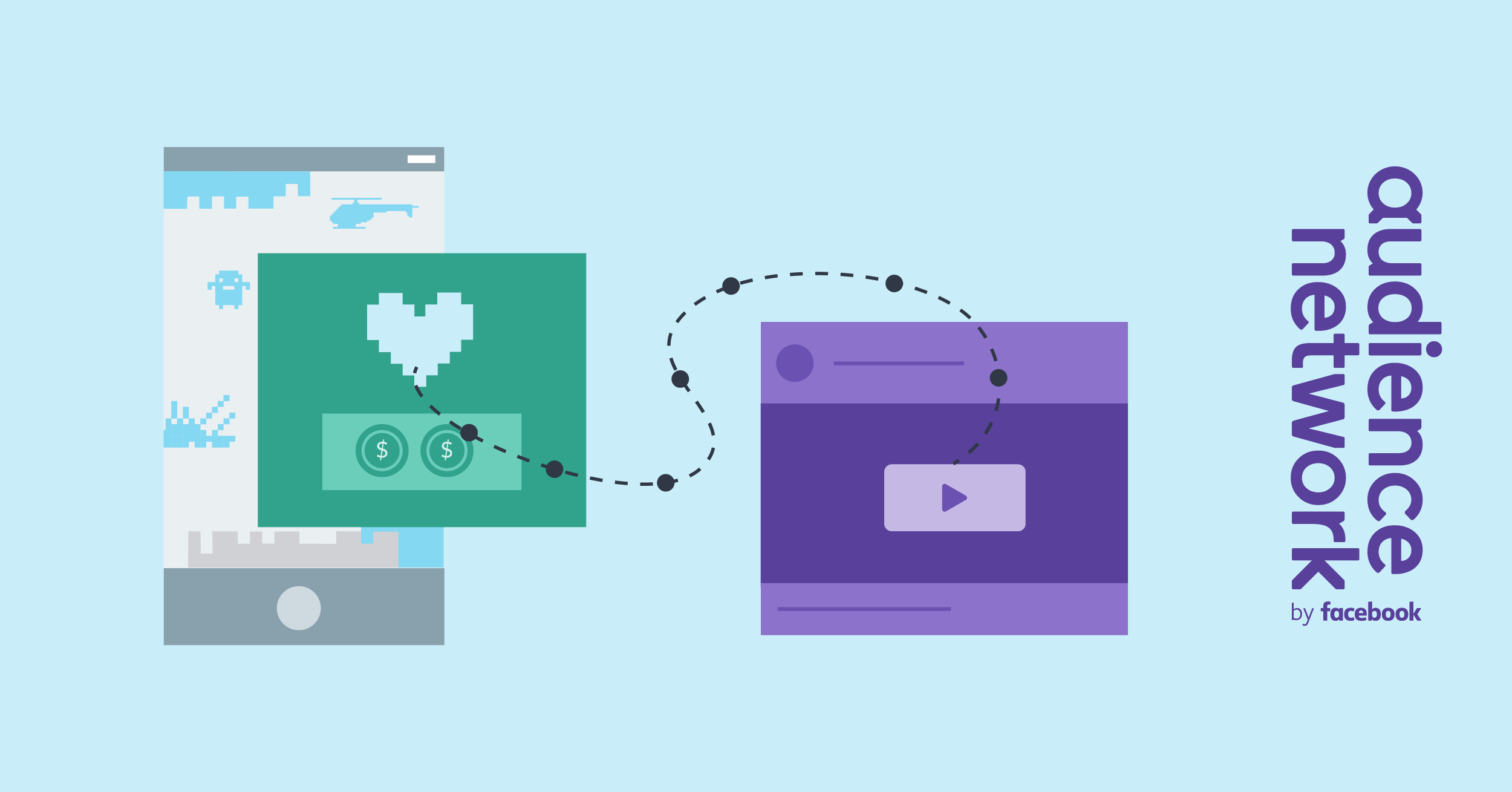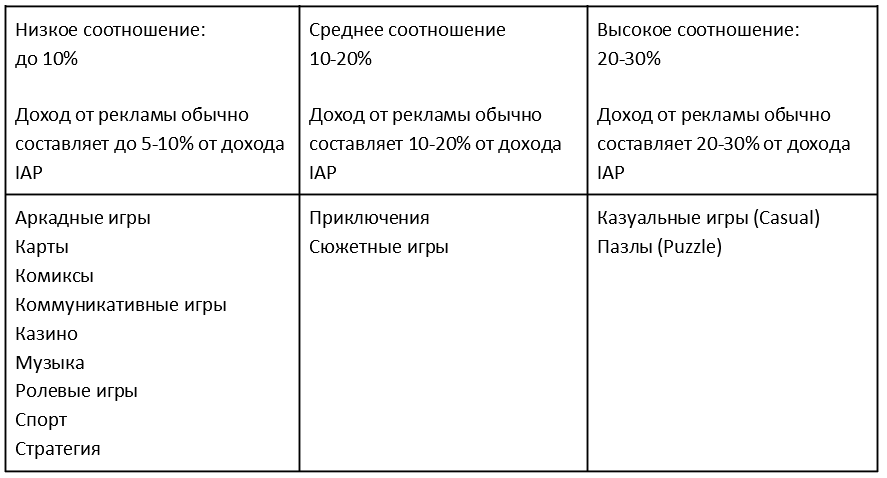How many games use advertising for monetization, how to correctly estimate the potential daily revenue from advertising, how to properly set up advertising monetization in your game? — answers these and many other questions in his column for App2Top.ru Orly Tsesis, Publishing Solutions Manager Facebook Audience Network.


Orly Cesis, Publisher Solutions Manager at Facebook Audience Network (Department for Central and Eastern Europe, as well as Israel)
In its March report “Monetization of mobile games through advertising: Untapped potential“, App Annie mentions that 89% of the most popular games in the world have SDK advertising platforms (this information was relevant at the end of 2019*).
In other words, the largest gaming companies in the world successfully use a hybrid model and diversify their income through in-app ads (IAA). As the report shows, there is also an increase in other key performance indicators.
Internal advertising in applications not only allowed those who implemented monetization to receive higher income from their games, but also had a positive impact on:
- player engagement;
- user retention;
- LTV.
Data collected from the top 1000 gaming apps showed that player retention in mobile games remains stable after installing the SDK of the advertising platform (App Annie, March 2020). In addition to retaining players, after installing the advertising SDK, the number of downloads and active users per month (MAU) increases.
In short, now is the time to switch to a hybrid monetization model. For publishers who are still heavily dependent on revenue from in-app purchases (IAP), we provide some practical tips to help make this transition.
Below we will look at several genre and geographical features from the App Annie report, and show why hybrid monetization is rapidly gaining popularity. After that, we will tell you about the steps you can take to get the best results from using hybrid monetization in your game.
Huge potential for monetization in casual and midcore genres
For developers of casual and midcore games who are interested in diversifying their income through advertising, the already mentioned App Annie report provides the following interesting and promising statistics:
- in 2019, casual games became the most popular genre in the world (their share of downloads was 82%), while a month after installing the advertising SDK, the average number of user sessions increased by almost 200%;
- developers of midcore games should pay attention to the fact that time in games of this genre represents 76% of the total time spent in games in 2019 (this is against the background of the fact that the number of downloads from all games was only 7%). High engagement in this market segment means a powerful untapped potential for monetization through advertising.
Advertising doubles the time in the game among Russian users and in other markets
Developers from Russia who doubt whether they should add advertising to games should pay attention to the following: in 2019, the time spent by Russian gamers in top projects doubled after installing an advertising SDK in them (the effect occurred within one to three months). Important: this is true not only for the domestic market, but for the whole world as a whole.
By the way, based on the time spent by gamers in the five most popular games with the SDK, we can single out the most popular genres in Russia: Casual Puzzle, Core RPG and Core Action.
Where to start: Choose a game to test
Some publishers start testing in-game ads only after IAP revenues reach peak values. Others prefer to test the app with fewer players first. Naturally, the potential expected revenue will be higher if you test advertising in a game with a larger player base.
Estimate the potential daily revenue from advertising in your game
To estimate the potential revenue from advertising in your game, use this equation as an approximate formula:
Daily Active users (DAU) x Frequency of ad impressions per day x Coefficient of user interaction with advertising (Ad engagement rate) x Average eCPM / 1000 = REVENUE POTENTIAL FROM ADVERTISING MONETIZATION
An important detail to note: a properly calculated frequency of Rewarded video impressions can help players advance in the game without reducing the value of the reward. In past studies** the survey results showed that an average of 3.5 Rewarded video impressions per day per player is a good starting point. Since the viewing of Rewarded video is initiated by the user, this may mean that the user should offer about 10 ads per day to achieve the target frequency of 3-3.5 per day.
To check your calculations of potential advertising revenue, you can compare the value obtained with the industry average ratios of advertising revenue and in-app purchases (IAP). This ratio depends on the genre of the game, the region and other factors.
The values given below for the main genres should be considered only as a guideline.

Think over the placement of advertising (entry points)
For this step, select the appropriate moments when the ad appears in the game. We recommend that you start with the most common ad placements that apply to most types of games:
- Out of lives: offering an extra life for watching ads;
- Boost reward: Rewards in the form of an additional booster at the beginning or in the middle of the game for viewing ads.
It is best to clearly indicate what kind of reward it is and what the player must do to get it, in order to increase the likelihood of interacting with advertising.
More detailed tips can be found in our online guide: “8 popular options for Rewarded video integration“.
Test ads for at least 10% of users
As a next step, test ads on at least 10% of your game’s users. Some app stores make it easy to run such tests (for example, Google Play).
Depending on your preferences, you can also set up your own A/B test using third-party tools (for example, Apptimize, AppsFlyer or Optimizely). It is important to follow the recommendations for conducting A/B testing, such as:
- keep other variables unchanged;
- conduct testing for at least 14 days.
Detailed recommendations on A/B testing can be found on our online resource “Ensuring a better income: How A/B testing can help“.
Analyze important metrics, check churn and optimize
After your test runs for at least two weeks, look at your ARPDAU (average revenue per unique user who logged into the app at least once during the day) and compare it with your benchmarks. With the Rewarded video format, sometimes a small percentage of your IAP users can become advertising users. Even in these cases, ARPDAU should have an upward trend, signaling a positive impact on overall revenue.
If the revenue growth is not as high as you expected, check whether the frequency of advertising matches your estimated estimate. Adjust if necessary and then retest.
Although it is expected that the outflow from the introduction of advertising will be extremely low (for example, 0.01%), you can check the outflow level to make sure that there is no significant loss of users.
At this stage, we suggest that you analyze and optimize important aspects of your advertising implementation:
- Receptivity;
- visual design (Creative);
- Frequency;
- Engagement.
Detailed descriptions and recommendations for optimizing each of the above factors can be found here.
All over the world, real publishers are getting incredible results
Do you want to know more about those who successfully use the hybrid monetization model? Habby, a casual gaming company, wanted to monetize its apps with both in-game purchases and advertising, while increasing the overall user experience of the game.
After testing and launching the Rewarded video format together with Facebook Audience Network, in Q4 2019 their Archero game received more than 15 million MAU worldwide. More than 60% of daily active users (DAU) watch ads. Even with advertising, this game entered the top 5 in-app purchases (IAP) in 75 countries according to iOS / Google Play ratings (App Annie, March 2020).
How to make the transition to a hybrid monetization model
If you are using the IAP monetization model in existing games and want to start testing ads, you will be interested to learn more about how advertising monetization works and how to get started with the Audience Network. We will be glad to see you in our new Resource Hub.
* Monetization of mobile games through advertising: untapped potential, App Annie (commissioned by Facebook Audience Network), March 2020 – a study of 1,000 gaming applications from around the world with an average value for iOS and Google Play from January 1 to December 31, 2019.
** Facebook internal data based on 534 applications in the NA, EMEA, APAC, LATAM regions for April 2018, published in the document “How to implement Advertising Monetization in applications”, February 2019.
